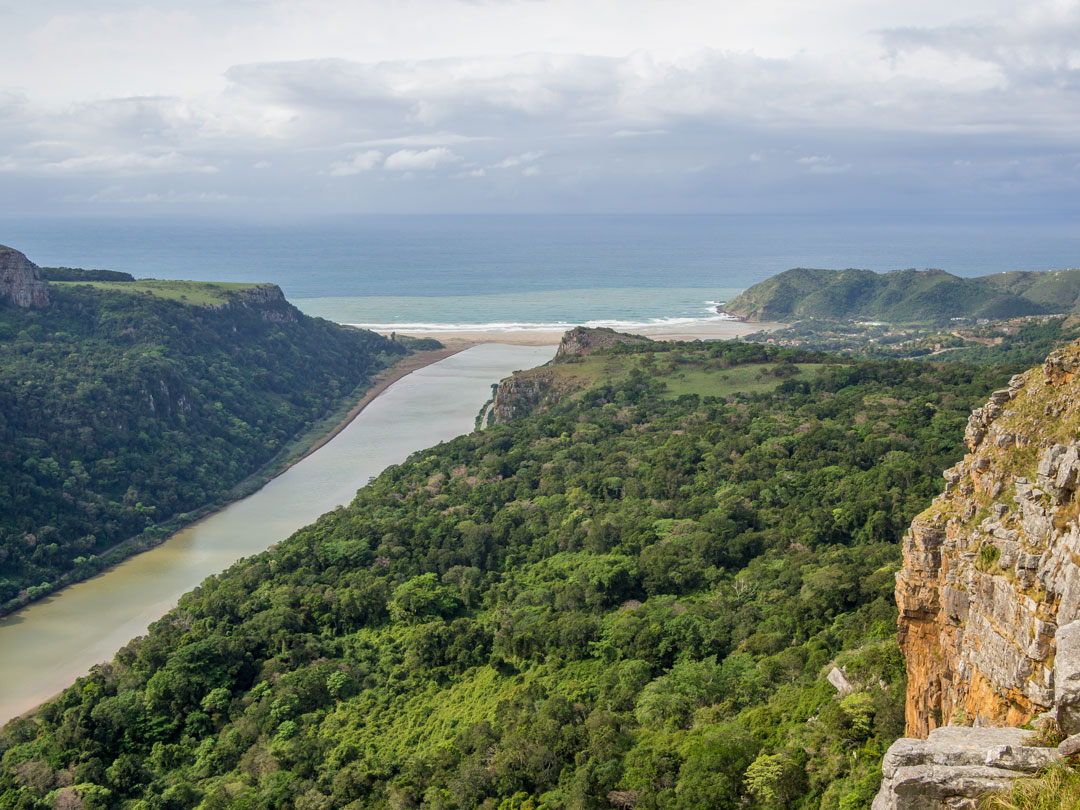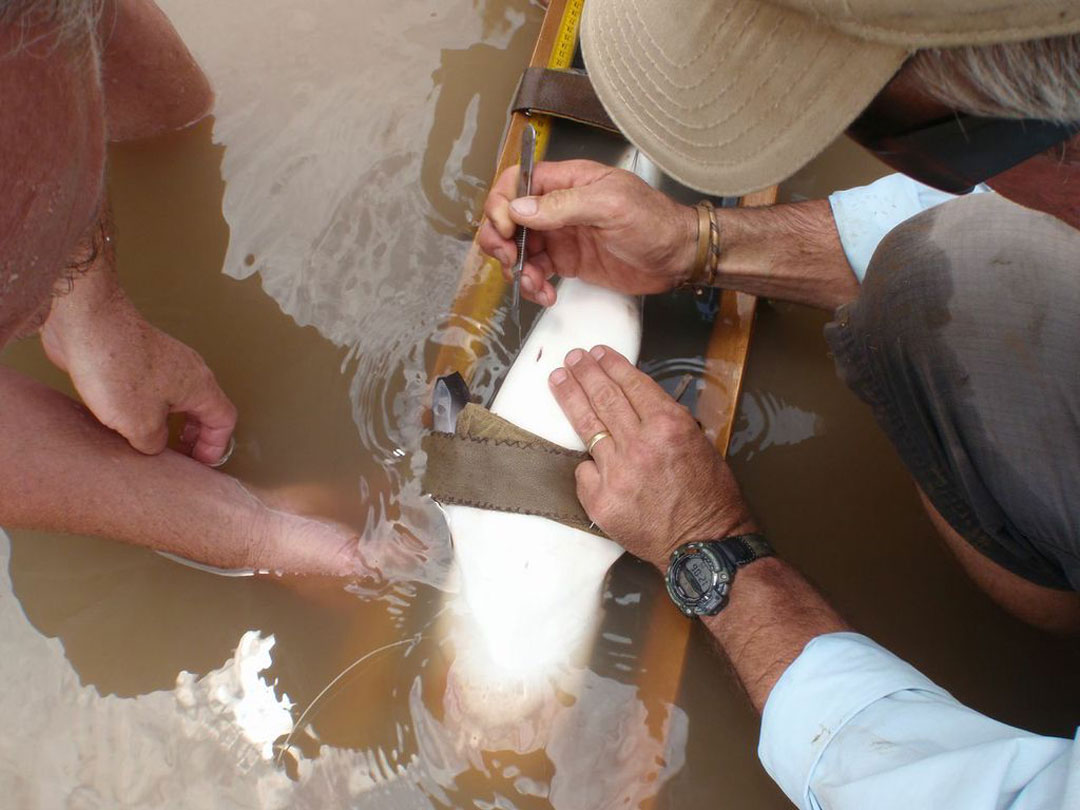Time to grow up – a story of a baby bull shark
We often present stories of how resident fish are to estuaries – species such as dusky kob and spotted grunter can spend years in these systems. But have you ever given any thought into how much time sharks might also spend in these systems?

Mzimvubu Estuary at Port St Johns along the Wild Coast in South Africa. Photo © Fabian Plock | Shutterstock
Bull sharks are found all over the world, predominantly occurring in the sea. However, this is one shark species that is actually capable of moving into estuaries or areas with lower salinities for extended periods of time. Baby bull sharks tend to stay in estuaries for a number of years, most likely for the same reasons that juvenile fish do – there’s food and shelter and habitats that can provide protection from larger predators (in this case, bigger sharks), so in other words, an ideal nursery to grow. Over 10 years ago, a handful of baby bull sharks were tagged in the Mzimvubu Estuary at Port St Johns along the Wild Coast by researchers from KwaZulu‐Natal Sharks Board. This place is quite the bull shark hotspot, with at least 10 shark bite incidents taking place between 2007 and 2015, nine of which did not have a happy ending. What makes the Mzimvubu so special is that it is one of the estuaries that big mama sharks come to, to pup, and has become all the more important given the major degradation of their former pupping ground, the St Lucia Estuary in the iSimangaliso Wetland Park Marine Protected Area. The goal of this small study was to get a better idea of how these babies used the estuary, which was done by deploying eight receivers into the estuary and monitoring the movements of these baby sharks for at least six months. The collected data did not disappoint, showing high residency to the estuary throughout the short study period.

A baby bull shark being tagged in the Mzimvubu Estuary at Port St Johns. Photo © Acoustic Tracking Array Platform (ATAP)
One baby shark was double tagged, meaning that both a short‐lived tag and a long‐life tag were surgically implanted into the shark. Because the time between signals is much shorter with the short‐lived tag, this allowed for closer monitoring of this individual while in the estuary. What the long‐life tag (at least five years) made possible was monitoring the movements of this individual after it left the estuary. A female bull shark was recaptured earlier this year along the KwaZulu‐Natal coastline and not one, but two, transmitters were found inside it. It turns out that this shark was a baby bull that was tagged in the Mzimvubu Estuary in March 2012. On looking at its movement history, the long-term residency this individual displayed to the Mzimvubu Estuary was nothing short or impressive. It spent at least four years in the estuary, only moving out during late summer and autumn before returning to the system. It appears that receivers deployed in the estuary were actually able to record the day it decided it was big enough to venture a little further – in August 2016. The furthest station north it was detected was Richards Bay and the furthest south was the Mzimvubu, a distance of approximately 410 km. Unfortunately, this tag expired in October 2016, so we aren’t entirely sure what it’s been doing over the past seven years. However, what we do know is that it was 1.42 m total length at recapture, and given that females first begin to mature at an estimated total length of 1.92 m (~20 years of age), we can assume that this female had unfortunately not yet had a chance to breed.
